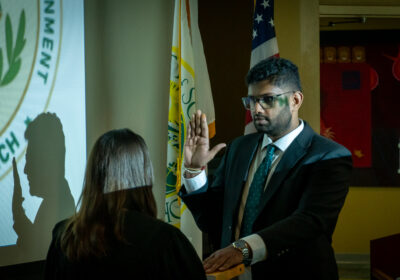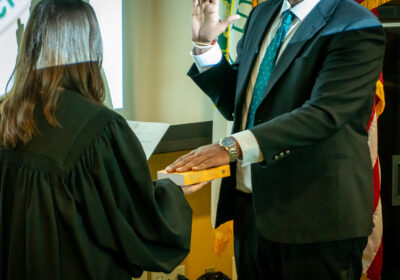USF hopes to raise out-of-state fees, enrollment
When USF administrators request a 15 percent tuition differential increase from the Board of Trustees (BOT) today, they will also request an 8 percent increase in out-of-state fees.
Though only 2.8 percent of USFs undergraduate students are from out-of-state, USF is the only Florida public university to have increased its proportion of out of state undergraduate students in the past three years, according to a Provosts Office document.
USF Provost Ralph Wilcox said there has been a push to attract students from around the globe to USF in the past few years.
Weve been deliberate in providing an attractive price point for non-resident students, and I think its had an impact, he said. When you graduate, the real world extends beyond the horizons of Hillsborough County. Youre going to be interacting with colleagues that talk differently and eat different foods and follow different principles than perhaps we do here.
But a non-resident student also brings the additional benefit of paying almost three times as much tuition as an in-state student.
During the 2011-2012 year a full-time, undergraduate in-state student paid $191.06 per credit hour, or about
$5,806 for the academic year, while an out-of-state undergraduate student paid $497.32 per credit hour, about $14,994 for the academic year. If the BOT approves the 15 percent differential and out-of-state fee increase, an in-state undergraduate student will pay about $6,437 per academic year, while a non-resident undergraduate student will pay $16,359.
I would be less than honest if I said I wasnt aware of the fact that non-resident students pay three times the tuition than students in the state of Florida should, Wilcox said. And theres nothing wrong with that, because the taxpayers of the state of Florida are subsidizing it, albeit at a rapidly diminishing level.Theres no case to be made that a student from New York or Venezuela should be subsidized by the Florida taxpayer. Were going to continue to charge international students and students from Texas three times that which (Florida students) pay.
Universities across the country have begun enrolling international students at a rising rate, according to the Chronicle of Higher Education, with undergraduate students from China and Saudi Arabia increasing by 23 and 44 percent, respectively, between 2009 and 2010.
But at USF, Roger Brindley, associate vice president for Global Academic Programs, said the increases have not been as rapid as national trends, nor have they been driven by them.
I think youre seeing higher education responding to a phenomenon, he said. Were understanding that if were a responsible, nimble, flexible university, part of our strategic goal mission has to be to reflect that. This isnt about the fad du jour. This is about doing something that speaks to your philosophy as an institution. Are there institutions in the United States waking up to the world or whatever? Im sure thats true. At this institution we have a long history of bringing international students and a long history of sending faculty out.
USFs international population has slowly but steadily grown since 2007.
In 2007, USF had 1,470 international students, including about 19.3 percent coming from India, 8.1 percent from Colombia, 7.3 percent from China. In 2011, USF had 1,745 international students, of which about 16.6 percent were from China, 13 percent from India, 5.2 percent from Saudi Arabia and the remainder from the rest of the world.
The demographics of INTO USF students students who pay additional fees for INTO classes that prepare them for admittance to USF stays closer to the national trend.
About 33 percent of INTO students are from Saudi Arabia, 29 percent from China and 38 percent from the rest of the world, INTO Director Glen Besterfield said. INTO students pay $19,850 per academic year for standard pathway programs.
Wilcox said the increasing number of non-resident students do not pose a threat to in-state students or the Universitys standards.
If youre bringing in more non-resident students, does that mean there are fewer opportunities for Florida students? he said. The answer is, clearly, No. Were overwhelmingly a Florida-resident university and were not going to turn away qualified undergraduate or graduate students from the state of Florida, and were not going to compromise our admission standards for non-resident students.
Though the growth of international students has been slow, Brindley said it has been significant.
Its a small growth, but its an important growth, he said. There are many at this institution, from the president on down, who believe that a globally engaged university is going to be a relevant university. When we talk about creating a campus with stronger global literacy and competence, one of the ways is to bring international students into the fabric of the campus. Were not looking to have a situation where we change the fabric of the campus, so much as improve the campus.






